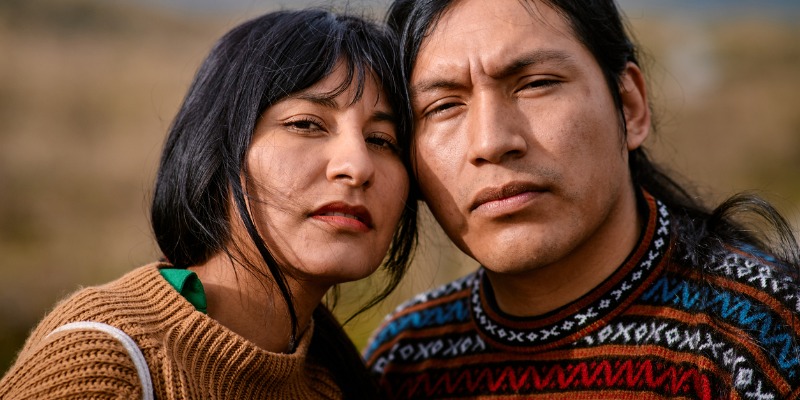Homeownership critical to solving Indigenous housing crisis

Many Indigenous communities in Canada are in crisis because of a severe shortage of adequate housing. According to a forthcoming study by the Assembly of First Nations and Indigenous Services Canada, First Nations reserves require $135 billion to address this deficiency. And that doesn’t include housing shortfalls in Métis settlements and Inuit communities, which could push the total need much higher.
The consequences of this mass housing shortage are devastating. Indigenous families must either live in crowded and dilapidated housing and cope with the resulting social problems or leave their communities to seek better living conditions and a better future elsewhere.
An underappreciated cause of this crisis is Indigenous families’ inability to own their own homes, in part because reserve land, whose title belongs to the Crown or the First Nation, cannot be pledged as collateral for housing loans. But also because the housing subsidized by the federal government in these communities has primarily been social housing. In the rest of Canada, in contrast, the government promotes homeownership with government-subsidized mortgage insurance, home-buyer saving plans and other policies. Homeownership is generally viewed as good for community well-being and social stability. As a result, approximately 70 per cent of families in the rest of Canada own their homes. In most Indigenous communities, however, the rate of homeownership is effectively zero.
This paternalistic focus on social housing underscores a lack of understanding of the substantial adverse social and economic impacts these discriminatory policies have, not just on Indigenous people but also indirectly on all Canadians. Poor quality housing contributes to a myriad of problems in Indigenous communities, including family strife, substance abuse, unemployment and crime.
Moreover, social housing in these communities depreciates at a rate at least twice as fast as similar owner-occupied housing. Homeowners generally have a stronger incentive to maintain their residence than occupants, which means government support just to maintain the existing housing stock must be that much greater.
Ultimately, the lack of adequate housing encourages young and enterprising individuals to leave their Indigenous communities in search of better housing and economic opportunity, including the possibility of buying their own home. But people with (literal) get-up-and-go, who possess the seeds to future economic prosperity, are the very people these communities can least afford to lose.
So, what can be done to promote homeownership in Indigenous communities?
The first step is to recognize that the current approach to Indigenous homeownership, which relies on mortgage guarantees by the Indigenous community itself, has not worked. It’s bureaucratic, costly and inequitable. Imagine, if you are not Indigenous, it would be like getting your entire city council to sign off on your mortgage.
The next step is to understand that Indigenous-led and -run financial institutions, such as the Aboriginal Savings Corporation of Canada (ABSCAN), where one of us is president, have successfully provided mortgages to their community members without the requirement of repossession in case of default. Thousands of mortgages have been issued by these institutions in recent decades with few, if any, defaults. These institutions don’t simply rely on financial ratios to make housing loan decisions. They invest much more effort in assessing the creditworthiness of their clients, with whom they have developed close relationships. They are also using new methods of defining title, such as issuing long-term leases that, in case of default, can be sold to someone else on the reserve, so title always remains with the First Nation.
To significantly increase homeownership in Indigenous communities this innovative model of Indigenous-to-Indigenous housing finance should be scaled up to the national level. ABSCAN, in collaboration with the National Aboriginal Capital Corporations Association (NACCA), which one of us chairs, has developed such a proposal called “Yanonhchia” (the Huron-Wendat word for “home”).
This proposal calls for an initial capital contribution of $150 million from the federal government — which is less than two per cent of the $8.3 billion pledged in the 2022 and 2023 budgets for Indigenous social housing. Indigenous financial institutions (IFIs) within NACCA would issue the mortgages, financed by this initial outlay. So far six IFIs have signed up. Eventually many of the 50 others who are members of NACCA could become involved. The number of homes built under this program would grow over time as mortgages are repaid and the capital base increased. The resulting pool of mortgages could be securitized and sold to investors to further expand the funding available.
Yanonhchia offers a sustainable long-term solution to the Indigenous housing crisis. It would be Indigenous-led and -run, scalable to demand and therefore better able to meet the needs of Indigenous families. Indigenous communities would benefit greatly because the resulting housing stock would be more durable and of much higher quality. In the end, making homeownership in Indigenous communities the same as it is in the rest of Canada is critical to solving the Indigenous housing crisis.

